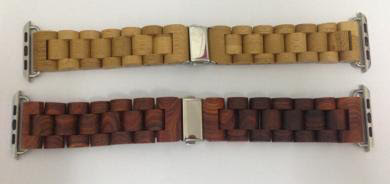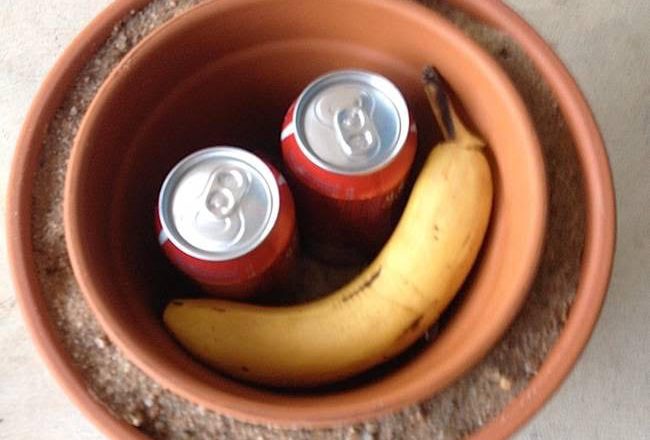
Submitted questions will be posted with my response by the following Tuesday or before.
Submitted comments will be moderated and approved within 24 hours.
Sperm counts in men from industrialized countries have dropped by more than 50 percent in less than 40 years

Could exposure to chemicals be impairing our ability reproduce as a species
Researchers from a study done at Hebrew University-Hadassah Braun School of Public Health and Community Medicine in Jerusalem announced last week that sperm counts in men from America, Europe, Australia and New Zealand showed a 52.4 percent decline in sperm concentration and a 59.3 percent decline in total sperm count among North American, European, Australian and New Zealand men. And the rate of decline is not slowing.
This analysis did not look into reasons for the decline, but noted that falling sperm counts have previously been linked to various factors such as exposure to certain chemicals and pesticides, smoking, stress and obesity.
No significant decline was seen in South America, Asia and Africa, but researchers noted that far fewer studies have been done in these regions.
REUTERS: Sperm Count Dropping in Western World
THE NEW YORK TIMES: Sperm Count in Western Men Has Dropped Over 50 Percent Since 1973, Paper Finds
Toxic Free Watch Strap?

Wooden Watch Strap
Question from Jonathan
Hi Debra,
I’ve just discovered your page. It is WONDERFUL. My wife and I are attempting to slowly but surely reduce our toxic levels at home (particularly plastics!) for ourselves and our children, and your site is going to help us a lot for sure!
My latest mission is watch straps! I’ve come to realise that it is not so easy to find something toxin free! And if a watch wearer, we are in contact with the strap ALL day!
I guess that’s where the problem originates! They are on all day, so have to resist wear and tear, sweat and other liquids, sun and heat. So they mostly are build tough, and that means:
Plastic straps: are… plastic. And the non-solid “woven fabric” straps like NATO straps are often either nylon or Cordura based or some other plastic.
Leather. But leather straps will all surely be chromium based leather. Rawhide wouldn’t be flexible enough etc. And leather is just awful in so many ways. Btw you may have already seen it but here’s a great post on leather: How Leather Is Slowly Killing the People and Places That Make It
So I searched for “vegan leather” straps. These seem to be pure plastic or PU coated leather. Sigh…
Then I heard about cork watch straps! Made from real cork! I don’t know much about cork. But I don’t trust that cork could withstand much movement or wear, could it? So I would bet the cork is bound with melamine or PU or something to stop it falling apart. Particularly cus watch straps are so thin! Also, I have no idea about the ethics or processes of cork manufacturing.
Any thoughts? Could this be the answer?
What about canvas? What is canvas? I see some canvas straps that are backed with leather anyhow. But a pure canvas strap? Is that possible? I’m thinking about canvas like what paintings are on. They’re not plastic these days surely? Linen or something?
Any other ideas? The more I look, the less hope I find! Product listings are SO vague and retailers and manufacturers alike! I need help Debra! Help!
Debra’s Answer
I stopped wearing a watch many years ago for all the reasons you state.
But I still needed to know what time it was.
There are watches you can carry without a strap, such as watches on necklaces, pocket watches, travel clocks you can put in a pocket or purse and probably more I’m not aware of.
Today the time is on your cell phone (if you carry one) so there’s not much need for a watch.
You didn’t mention metal watch bands, but they often cause rashes.
Readers, any success with finding a nontoxic watch band?
The Short List of Rules for Choosing Products

I can’t tell you who wrote this because the person who sent it to me didn’t know, but I felt it was worth passing along.
Inspired by Michael Pollan’s Food Rules, here is a short list of guidelines for choosing products—any product.
I couldn’t have said it better myself.
ELEVEN RULES FOR CHOOSING PRODUCTS
- If it is cheap, it probably has hidden costs.
- If it starts as a toxic input (like ethylene glycol in the manufacture of polyester), you probably don’t want it in your house or office.
- Use materials made from substances you can imagine in their raw or natural state.
- Use carbohydrate-based materials (i.e., natural fibers) when you can.
- Just because almost anything can kill you doesn’t mean fabrics should.
- Pay more, use less.
- Consult your nose – if it stinks, don’t use it.
- If they can’t tell you what’s in it, you probably don’t want to live with it. (Note: this is not just the fibers used to weave the fabric – did the processing use specific chemicals, like heavy metals in the dyestuff, or are there any finishes on the fabric?)
- Avoid materials that are pretending to be something they are not (like polyester mimicking linen).
- Question materials that make health claims.
- Regard space-age materials with skepticism.
How Can I Keep My Food Cold?

Instructions at Instructables
Question from Holly
Hi Debra,
Thanks so much for helping me become such a conscious consumer. Your work and advice is really appreciated!
I am on the hunt for a great cooler that will keep our stuff cold for a couple of days. After lots of research of the likes of Pelican, Yeti, and Bison, I came to realize that the stuff that keeps the ice frozen for so long is polyurethane foam insulation! This worried me, but THEN I found out that’s what is in our fridges.
Is this safe? The coolers are listed as having polypropylene shells (I am assuming that is the same plastic used for fridges) – does polypropelyne do a good job of containing VOCs within the walls of the cooler or fridge?
Also, Pelican soft coolers are made with double-coated 840D TPU; Yeti soft coolers are made of ColdCell™ foam insulation with EVA foam bottom – what are your thoughts on this regarding being so close to food etc.?
I’d love your input on this because I have done exhaustive research and can’t seem to find out anything!
Thanks.
Debra’s Answer
First of all, polyurethane foam isn’t a problem in coolers and refrigerators because it’s enclosed. As long as it’s sealed up inside something else, the fumes won’t get through.
The polypropylene shell is also fine. Polypropylene is one of the least toxic plastics. It’s used to make food storage containers. So I’m not really worried about that.
Now you asked if polypropylene would block VOCs. Great question. Here’s an interesting paper called Guidance on the Use of Plastic Membranes as VOC Vapor Barriers. But in a cooler you’re talking about a thick piece of plastic, not a membrane. That think piece would certainly block the VOCs.
Again, with refrigerators, the plastic would be thick enough to block VOCs. Here are the plastics used on the inside of your refrigerator:
Tough, impact- and corrosion-resistant plastics such as ABS, high impact polystyrene and polypropylene are used to create molded interior panels and door liners that help maximize usable space. Molded-in color means there is no paint or coating to peel over time. These panels are also moisture resistant, which helps them repel spills and stains. For clear drawers and compartment doors, polystyrene, polycarbonate and acrylic are the resins of choice, with durable polycarbonate often chosen for frequently used doors and compartments.
Thanks for asking this question. I didn’t know polycarbonate was used to make those crisper drawers. That’s the plastic with BPA.
TPU and EVA are both pretty nontoxic plastics. I’m not concerned about them.
As long and we’re on the subject, here are some links for insulating bags.
Here is a link to one similar to one I use and love. It has no outgassing. It’s a foil-lined cloth bag I purchased at my local natural food store.
www.ebay.com/itm/Insulated-Reusable-Grocery-Bag-Our-best-seller-2-pack-BLUE-CMW-/112471869875
You could use several inside each other for more insulation.
Also look at this cooler bag:
www.debralynndadd.com/debras-list/pack-cooler-bags
And here’s an article about how to keep your food cool without electricity:
www.treehugger.com/kitchen-design/fifty-buck-fridge-keeps-your-food-cool-without-electricity.html
Readers, what do you use to keep your food cold?
Affordable Organic Clothing for Plus Size Women

Oversized Linen Tunic Dress
Question from Marcella
Hi Debra,
I need your assistance to find affordable organic toxic free clothing but for Plus Size Women. If possible, I prefer a local store in my area where I can go to try them on. I live in Carson, CA in the Los Angeles County near San Pedro which is the Port of Los Angeles. If not, then online is the next best thing. In general, I wear size 1X in tops and 14W or 16W for pants/shorts.
I just want to be able to find clothing that is stylish yet within my budget so I do not break my bank account. I am not looking for clothes that makes one look like a hoochie mama or an old lady before my time. When it comes to clothes, I am very conservative yet fashionable.
I do not know if you have seen/read the link below on the internet. This lady hit it right on the nose when it came to shopping for organic plus size clothing for women. She understands my frustration completely.
www.greenandgorgeous.net/2012/08/07/wheres-all-the-plus-sized-eco-fashion
Debra’s Answer
As a plus size woman myself, I agree this blogger has hit it right on the nose. And I found another such post at
www.ecocult.com/sustainable-ethical-plus-sized-clothing
I am fortunate that my work-at-home lifestyle allows me to wear cotton tank tops and cotton capri pants most of the year here in Florida. I’ll admit that I have a drawer of neutral color pants and a drawer of colorful tank tops and my fashion choice go as far as pulling a pair of pants out of one drawer and a top out of the other and I’m dressed for the day.
But I do love fashion and used to be quite fashionable before I gave up all the synthetic fabrics to go natural.
I’ve been able to find cotton clothing in my size, and linen clothing too, just at department stores and even at places like TJMaxx and Ross Dress for Less. But it’s getting more and more difficult. I’m thinking about making my clothes or hiring someone to make them or even designing and selling my own line of clothing.
The blog mentioned by the reader lists some websites that have plus clothing. I went through the list and unfortunately I could only agree with three: Eileen Fisher ($$$ and sold only at fine department stores), Rawganique (already on Debra’s List) and Gaia Conceptions (which I’m adding to Debra’s List right now).
Check out the Clothing page on Debra’s List. You can search the page for “plus” and find the listings that have plus sizes. I’ve added a few new post for plus size natural fiber clothing that I found today.
And please let me know any plus size websites you find that you like so I can add them.
Just a comment…as I am looking though a number of websites on these “natural fiber plus size” lists, I’m seeing that what they think are natural fibers and I think are natural fibers are two different things. I think natural fibers are cotton, linen, silk, wool and other “whole” fibers. They think natural fibers are tercel, rayon, and other manufacurered items, or natural fibers mixed with spandex, polyester and other synthetics. So be sure to find the actual fabric content and check it out. Don’t assume “natural” is actually natural on clothing sites.
Hemp Beds?

Batting made from hemp
Question from Therese
Hi Debra,
Super big thanks for all your good, thorough research and reporting.
Do you have any info about hemp beds? Conventionally made beds with foam give me headaches and I’m very sensitive/allergic to organic cotton fibers. (skin was on fire after lying down on organic cotton beds in showroom)
My instincts are telling me hemp could be a good option but I need good info in order to proceed.
Thank you!
Debra’s Answer
Like this? www.earthsake.com/store/HempMattress.html
100% Hemp inside and out.
Need Wood Ceiling Fan Blades

Question from Marcia
Hi Debra,
I am living with three chronic illneses. One being severe scoliosis and it’s hard to breathe. Must have real wooden blades. Please help find economic one.
Thank you.
Debra’s Answer
Readers, do any of you know of actual wood blades for ceiling fans?
All the “wood” blades I found were fake.
Marcia if you can’t find them ready made, ask a handyman to make some for you. That shouldn’t be expensive.
Phthalates in Mac and Cheese Made With Powdered Cheese Higher Than Natural Cheese

This is exactly why you need to eat real fresh food, from the farm or garden to your plate.
Phthalates are potentially harmful chemicals. Three phthalates (DEHP, DBP, and BBP) were banned from children’s products in 2008. The most recent 2015 phthalate regulations call for banning additional phthalates (DINP, DIBP, DnPP, DnHP and DCHP).
In 2014 a report to the Consumer Product Safety Commission concluded that food—not plastic children’s products—is the primary exposure to plastics.
Now a new study has found phthalates in all but one of 30 packaged mac and cheese mixes made with powdered cheese.
Most relevant compounds within the sample set were DEP, DiBP**, DnBP, and DEHP*, with a prevalence ranging from 63 to 92 %. DAP and DCHP were never found above the LOQ, and DMP only in 2 samples. Prevalence of DnHP, BBP*, DNOP, DiDP/DPHP and DiNP** ranged between 12 and 22 %.
* banned from children’s products in 2008
** recommended for ban in 2015
The major findings are:
- Phthalates were detected in nearly every cheese product tested (29 of 30 varieties). The testing identified ten different phthalates in all, with up to six in a single product;
- Average phthalate levels were more than four times higher in macaroni and cheese powder samples than in hard blocks & other natural cheese, in fat of products tested;
- DEHP, the most widely restricted phthalate, was found more often and at a much higher average concentration than any other phthalate, among all the cheese products tested.
To me, this clearly shows that processing adds toxic chemicals to foods. And the more highly processes foods contain more toxic chemicals.
This applies to organic foods too. They didn’t give the brands tested, but it doesn’t matter if you buy organic mac and cheese with powdered cheese in a box. It’s the processing of the cheese that adds the phthalates.
NEW YORK TIMES: The Chemicals in Your Mac and Cheese
KLEAN UP KRAFT: Testing Finds Industrial Chemical Phthalates in Cheese
“Vast Amounts” of Toxic Mercury Accumulating in Arctic Tundra

Scientists have long been reporting high levels of mercury pollution in the Arctic.
But now a new study reports identifies gaseous mercury in the air as the major source. It gathers in the Arctic tundra, then moves into the soil, and from there into waterways.
If so much mercury is moving from industrial nations to uninhabited arctic areas, this news begs the question: how much mercury are WE being exposed to from the environment on a daily basis?
ENVIRONMENTAL NEW NETWORK: Study Finds Toxic Mercury is Accumulating in the Arctic Tundra
UNITED STATES ENVIRONMENTAL PROTECTION AGENCY: Mercury Emissions: Worldwide Emissions
MOMS CLEAN AIR FORCE: How Mercury Poisoning Works
UNITED STATES ENVIRONMENTAL PROTECTION AGENCY: Mercury and Air Toxics Standards (MATS)
Get Out and Sweat This Summer—It Will Remove Toxics From Your Body

GreenMedInfo has been tracking studies that show the effectiveness of sweating to remove toxic chemicals from the body.
Ordinarily you would need to sit in a sauna to sweat, but it’s summer. Go outside. Sweat is sweat. It’s good for you.
GREEN MED INFO: 4 Reasons to Break a Sweat (Solvents, Phthalates, Metals, BPA
GREEN MED INFO: Research Confirms Sweating Detoxifies Dangerous Metals, Petrochemicals] (Metals)
GREEN MED INFO: Confirmed: Sweating Removes Deadly Chemicals From The Body (Flame Retardants)







